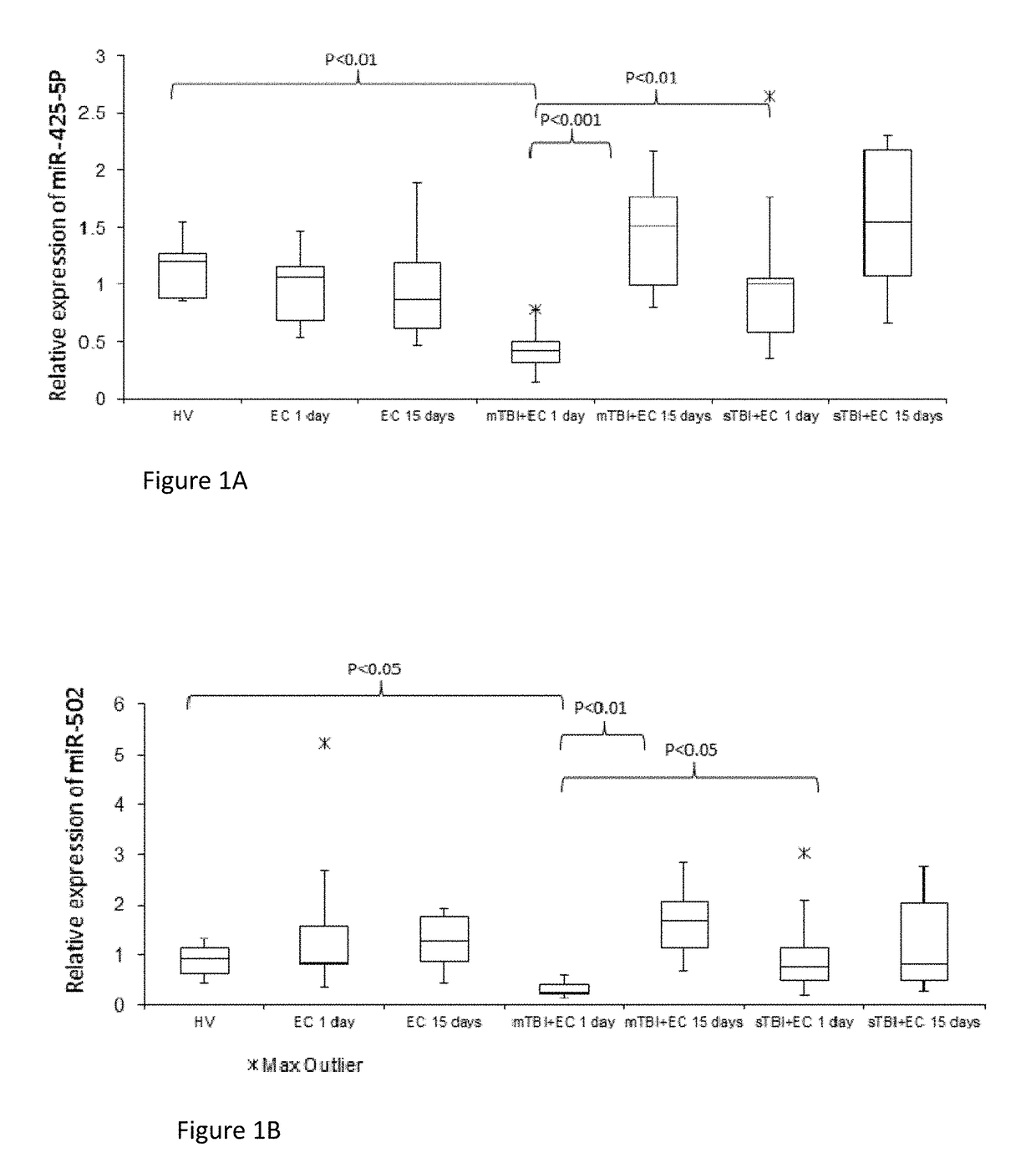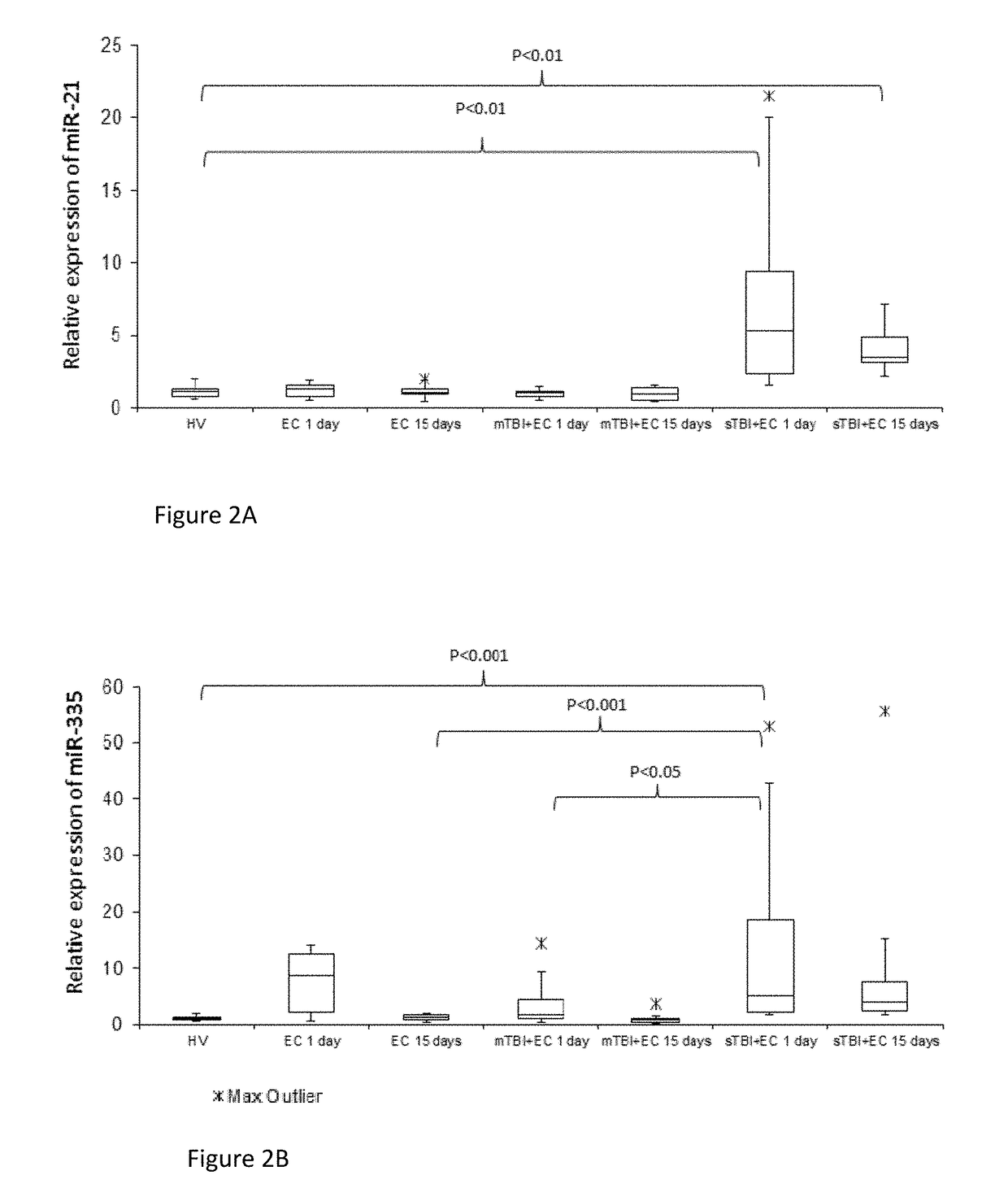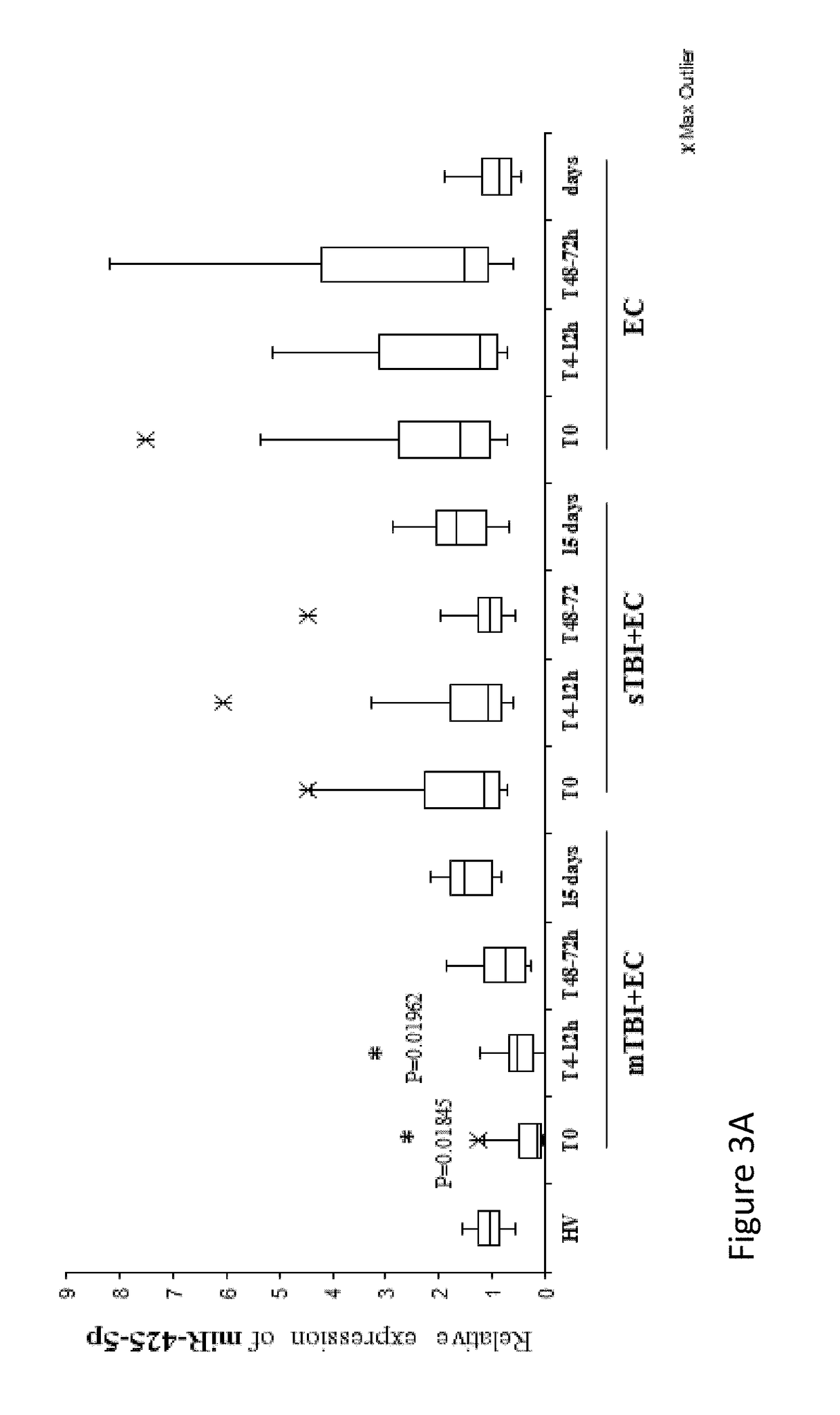Biomarkers of traumatic brain injury
a biomarker and brain injury technology, applied in the field of diagnostic and monitoring of tbi using mirna bio, can solve the problems of inability to accurately assess the severity of tbi, lack of reliable biomarkers, and current diagnostic tools that are difficult to assess in clinical practi
- Summary
- Abstract
- Description
- Claims
- Application Information
AI Technical Summary
Benefits of technology
Problems solved by technology
Method used
Image
Examples
example 1
[0179]Materials and Methods
[0180]Patients and Samples Collection
[0181]Study participants were recruited from the Surgical Reconstruction and Microbiology Research Centre (SRMRC) at Queen Elizabeth Hospital of Birmingham (UK) as part of Brain Biomarkers after Trauma (The Golden Hour Study) study (Ethics Ref. 13 / WA / 0399).
[0182]First, we performed screening of 754 miRNAs in 5 mTBI with extra-cranial injury (EC) patients, 5 sTBI+EC injury patients and healthy volunteers (HV) at 1 day and 15 days from injury with the aim to select specific candidate biomarkers able to discriminate mild from severe TBI and predict the recovery of mTBI after 15 days. Based on this information (Table 2), it was then possible to confirm the results study in an enlarged cohort of patients of 40 individuals grouped in 4 different categories: HV (n=10), EC (n=10), mTBI+EC (n=10), sTBI+EC (n=10). Healthy volunteers were consented and enrolled in the RECOS study. EC injury patients had radiographically-confirmed ...
example 2
[0207]Patients and Sample Collection
[0208]Study participants were recruited from the Surgical Reconstruction and Microbiology Research Centre (SRMRC) at Queen Elizabeth Hospital of Birmingham (UK) as part of SIR (The Steroids and Immunity from injury through to Rehabilitation) study (Ethics Ref 11 / SW / 0177), ReCoS (The REpetitive COncussion in Sport) study (Ethics Ref. 11-0429AP28) and Golden Hour study (Ethics Ref. 13 / WA / 0399). Written informed consent was received from participants or valid proxy (family or a professional not directly involved in the study) prior to inclusion in the study.
[0209]The second dataset of samples used serum samples from a total of 120 individuals grouped in 4 different categories: HV (n=30), EC (n=30), mTBI+EC (n=30), sTBI+EC (n=30) and blood was taken at different time points (T0-1 h, T4-12 h, T48-72 h, 15 days) in each patient. Healthy volunteers were consented and enrolled in the ReCoS study. EC injury patients had radiographically-confirmed orthopaed...
example 3
[0223]Saliva samples were collected from concussed professional athletes after 2-3 days from injury and the microRNAs present in the saliva was analysed. The athletes were diagnosed clinically as having mTBI.
[0224]Materials and Methods
[0225]MicroRNAs were analysed using nCounter technology (nanoString Technologies®), which uses molecular “barcodes” and microscopic imaging to detect and count up to several hundred unique transcripts in one hybridization reaction. Each colour-coded barcode is attached to a single target-specific probe corresponding to a microRNAs of interest.
[0226]Analysis was carried out according to the manufacturer's protocol which includes the following steps:
[0227]Hybridization: The technology employs two ˜20-base probes per microRNA that hybridize in solution. A reporter probe carries the signal, while a capture probe allows the complex to be immobilized for data collection.
[0228]Purification and Immobilization: After hybridization, the excess probes are removed...
PUM
| Property | Measurement | Unit |
|---|---|---|
| time | aaaaa | aaaaa |
| temperature | aaaaa | aaaaa |
| temperature | aaaaa | aaaaa |
Abstract
Description
Claims
Application Information
 Login to View More
Login to View More - R&D
- Intellectual Property
- Life Sciences
- Materials
- Tech Scout
- Unparalleled Data Quality
- Higher Quality Content
- 60% Fewer Hallucinations
Browse by: Latest US Patents, China's latest patents, Technical Efficacy Thesaurus, Application Domain, Technology Topic, Popular Technical Reports.
© 2025 PatSnap. All rights reserved.Legal|Privacy policy|Modern Slavery Act Transparency Statement|Sitemap|About US| Contact US: help@patsnap.com



